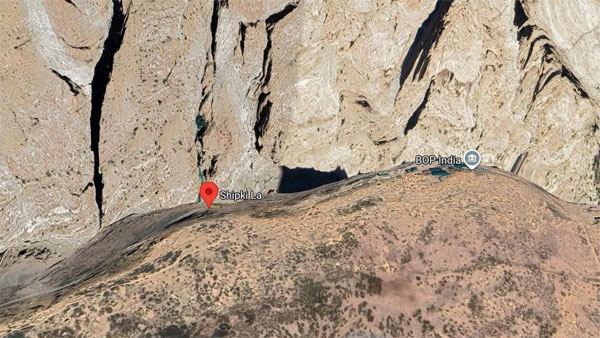Daijiworld Media Network - Shimla
Shimla, Aug 24: In a significant diplomatic and economic development, India and China have agreed in principle to reopen the Shipki-La Pass in Himachal Pradesh’s Kinnaur district for traditional border trade, the Himachal Pradesh government announced on Sunday. The move marks a revival of historic ties along a route that once served as an offshoot of the ancient Silk Road.
Alongside Shipki-La, discussions are underway to restore trade through the other two designated points — Lipulekh Pass in Uttarakhand and Nathu La in Sikkim — all of which had remained closed since 2020 due to the Covid-19 pandemic.
This breakthrough follows recent high-level talks between Indian External Affairs Minister S. Jaishankar and Chinese Foreign Minister Wang Yi, where both sides also agreed to expand the scale of Indian pilgrimages to sacred Tibetan sites including Mount Kailash and Lake Manasarovar starting from 2026.

The Himachal Pradesh government, led by Chief Minister Sukhvinder Singh Sukhu, had actively pushed for the reopening of the Shipki-La trade route. In a formal appeal to the Union government, the Chief Minister highlighted the pass's historic significance and its potential for economic and cultural revival. The Centre responded by taking up the matter with Beijing, resulting in the recent diplomatic consensus.
According to the state, Shipki-La already has viable road access from Rampur Bushahr and Pooh, and offers a shorter route to Darchen and Mansarovar on the Tibetan side, making it a strategic choice for resuming the Kailash Mansarovar Yatra. Infrastructure developments such as base camps could now follow, enhancing both trade and religious tourism.
In a letter to Chief Minister Sukhu, EAM Jaishankar confirmed that Shipki-La would be added as a third route for the yatra, joining Lipulekh and Nathu La which reopened earlier this year after a five-year hiatus.
This renewed engagement is expected to boost cross-border trade, strengthen cultural exchange, and open new economic opportunities for the region, particularly Himachal Pradesh’s remote border districts.